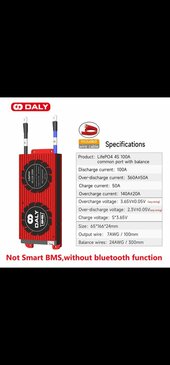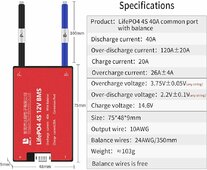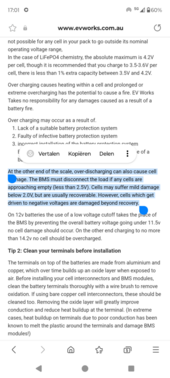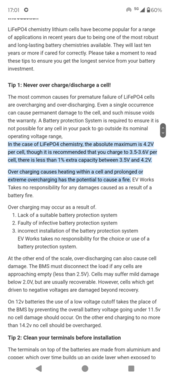the winstons when i ordered them last year were listed as 4 volt max charge. i went to their site to reread to see what my specs were and realized that they had updated the sheets. the newest versions are only good to 3.8 max with a 3.65 recommendation.
things they be a changing, thats for sure...
Well than old bms you can really not use on a new serie.
Its just 0.1 volt differences for it disconnect.
Really that 3.65 vs 3.75 story is what you let a bms set it off for a charger .
My own bms that is program to shut down charge by 3.75 volt
On 3.65 volt i have a warning first .
Ts forget that volt are never really stabel it go up and down well its balance the cells
That will be reason that by 3.75 a charge disconnected and not by the 3.65 volt
Cells are go balance by 3.45 volt and and 3.55volt .
So long the cell is around its threshold of 3.65 its fine for balance the cells.
0.1 volt looks like a lot but its not really .
Bms is nog use for daily base .
Its use that if it go wrong and thare is no user around.
The systeem stay save.
So you your set your stuff under the stress hold of the bms .








